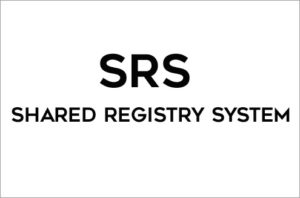
Date: 11/30/1999Shared Registration System – SRS was created in 1999. The United States Department of Commerce took initiative to create SRS, under an amendment to its cooperative agreement with Network Solutions, Inc. Under this domain name registration system, competing ICANN-accredited registrars register domain names utilizing one shared, central registry operated and maintained by NSI.
Although there is no limit on the number of registrars that may register names using the SRS, stability of the Internet and continuity for consumers is protected by the requirement that every business desiring to become a registrar in the .com, .net, and .org top-level domains must first become accredited for this purpose by ICANN.
SRS and ICANN
The US Department of Commerce appointed ICANN to look after the transition to SRS. The main responsibilities of ICANN included formulating and implementing a procedure for the sake of registrar accreditation, in a way that would create a competitive domain name registration system, ensuring continued domain name durability and Internet stability.
In March 1999, ICANN started accepting applications from companies who were interested in participating as one of five domain name registrars in SRS Testbed Program, which was prescribed in Amendment 11 of the DOC’s cooperative agreement with Network Solutions.
Starting in April 1999, ICANN was in charge of accepting the applications for registrar accreditation for the post-testbed period of the SRS. It accredited more than 160 businesses along with the five testbed program participants.
From 2001 to 2009, ICANN adopted the Registrar Accreditation Agreement (RAA) for all accredited registrars. In May 2009, the ICANN Board approved a total 17 amendments to the RAA. This agreement continues to be a hotly debated and edited agreement at nearly every ICANN meeting.
Problems in the Allocation of SRS
In 2001, there were reports about some registrars experiencing difficulties in evaluating the .com, .net, .org SRS in the hours wherein expiring names are deleted. After an investigation, it was found that substantial amounts of the bandwidth were being used in the wee hours by some registries, causing a large amount of queries to expire. ICANN took note of this matter and began keeping the community informed about its search a remedy. The solutions was the equitable allocation of the Shared Registry System, wherein every ICANN-accredited registrar was limited to use 256K of bandwidth and 250 simultaneous RRP connections.